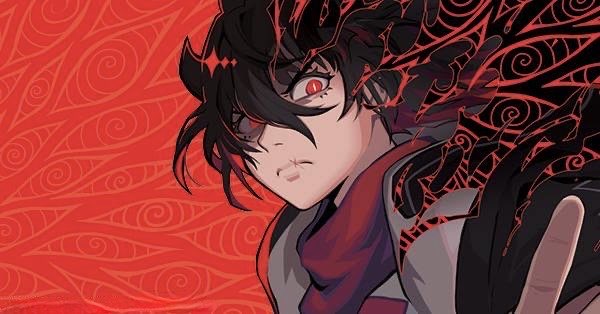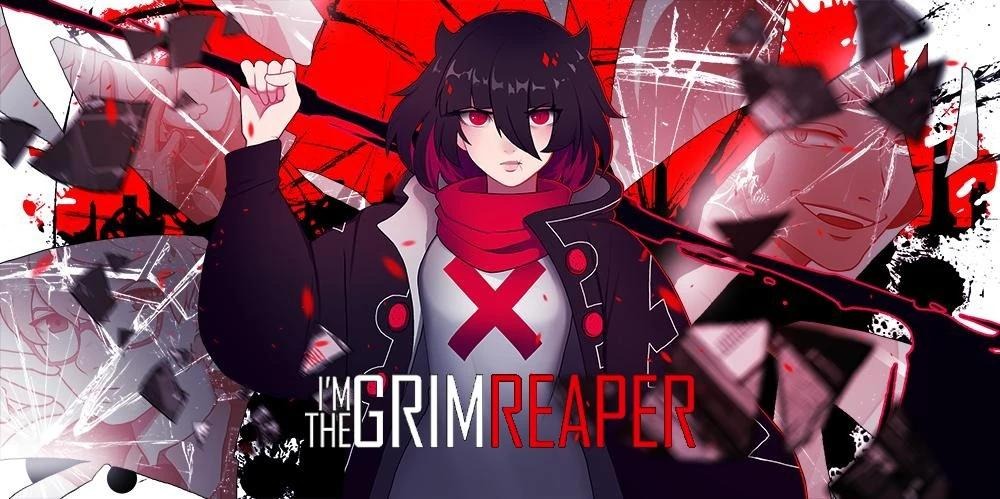For readers drawn to supernatural drama with moral complexity, I’m the Grim Reaper offers a gripping yet challenging narrative that explores life, death, and redemption. Available on ComicK, this manga adaptation of a popular WEBTOON invites audiences to follow Scarlet’s journey as she navigates her new role as a Grim Reaper, confronting the weighty decisions of who lives and who dies.
However, the transition from webcomic to printed manga raises questions about pacing, tone, and artistic execution, making this story a fascinating case study for fans of dark fantasy and supernatural thrillers.
A Webcomic Transitioning into Print
I’m the Grim Reaper started as a popular WEBTOON series before being adapted into manga format by Viz Media, aiming to reach a broader audience. This shift from digital webcomic to physical book raises interesting questions about how stories evolve across formats, especially when balancing pacing, artwork, and tone.
The story’s dark premise combined with moments of levity seeks to engage readers who enjoy supernatural drama mixed with moral dilemmas. Yet, how well does it hold up in this new format? This review unpacks the strengths and weaknesses of I’m the Grim Reaper, exploring its themes, characters, art style, and overall storytelling.

The Premise: Between Hell and Earth
At its core, I’m the Grim Reaper offers a unique twist on the classic afterlife narrative. Scarlet awakens in hell with no memory of her past and is presented with a stark choice: suffer eternal punishment or serve as the Grim Reaper, tasked with delivering one soul per day to the devil.
This setup lays the groundwork for a complex exploration of morality, identity, and redemption. The concept of marked sinners creates a visual and narrative hook, giving Scarlet a clear, if troubling, mission. However, the story quickly reveals that this role is fraught with emotional conflict, as Scarlet struggles with the weight of deciding who deserves damnation.
Character Dynamics: Secrets, Morality, and Redemption
Scarlet is a protagonist torn between duty and conscience. Her internal conflict about killing and sending souls to the devil adds psychological depth, making her more than just a grim enforcer. Her growing partnership with Chase, a disgraced detective with his own troubled past, introduces layers of trust and mystery. While Chase’s motivations remain somewhat unclear, his desire for redemption parallels Scarlet’s journey, creating a dynamic that drives much of the narrative tension.
The moral ambiguity surrounding their actions questioning what constitutes “evil” and whether some sins are justifiable provides a fertile ground for character development, though at times the dialogue and themes feel youthful and less nuanced than expected for the subject matter.
Themes: Morality, Justice, and the Weight of Choice
This manga wrestles with big questions: What makes a person truly evil? Is murder ever justified? Can one find redemption after death? These themes permeate the story, inviting readers to reflect on the nature of justice and morality. Scarlet’s role forces her to confront uncomfortable truths about humanity and herself, blurring the line between right and wrong.
However, the treatment of these themes sometimes comes across as simplistic or juvenile, lacking the depth and complexity that could elevate the story beyond a basic moral conflict. The interplay between humor and seriousness further complicates tonal consistency, which might challenge readers seeking a more mature philosophical exploration.
Art and Visual Style: Challenges of Format Transition
Visually, I’m the Grim Reaper faces notable challenges. Originally designed for a vertical scrolling webcomic format, the manga adaptation’s layout feels awkward in print, losing much of the pacing and flow that made the web version engaging. The color palette, which might work for quick digital chapters, translates poorly to a long, continuous read, with flat and lifeless hues detracting from the atmosphere.
Backgrounds often appear repetitive and uninspired, while character designs vary between serious and exaggerated comedic styles in a way that can feel jarring. These artistic choices, while likely intentional, may not resonate with all readers and highlight the difficulties of adapting web content for physical publication.

Audience and Content Suitability: A Delicate Balance
Rated Teen+ with graphic violence and mature language, I’m the Grim Reaper occupies an uneasy middle ground. Its themes and tone appear targeted toward younger readers familiar with webcomic culture rather than adults expecting a more sophisticated narrative. This duality creates a dilemma for libraries, bookstores, and readers about where it fits best.
While fans of supernatural stories and WEBTOON originals may appreciate its accessible style and moral questioning, those seeking deeper psychological or horror elements might find it lacking. Prospective readers are encouraged to preview the webcomic version to determine if the tone and content match their preferences.
A Mixed Bag with Potential
I’m the Grim Reaper offers an intriguing premise and a protagonist whose moral struggles add emotional weight to a familiar supernatural setting. However, the transition from webcomic to printed manga reveals significant shortcomings in pacing, art, and thematic depth. While the story’s youthful voice and visual style may appeal to some, others might find it uneven or underdeveloped.
This title serves as a reminder that not all webcomics seamlessly translate into print, and readers should consider format and tone before diving in. For those curious about supernatural morality tales and willing to engage with its flaws, I’m the Grim Reaper provides an interesting, if imperfect, reading experience.
